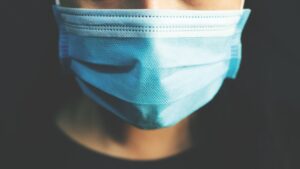Just five months after the first case of COVID-19 in Maryland not related to travel (known as “community spread”) in mid-March, Maryland marked more than 100,000 positive cases of the disease that comes from the novel coronavirus.
Of those, 3.5 percent, 3,502 people, have died. We mourn them, and all of the more than 770,000 deaths worldwide.
We are grateful for the measures taken by Gov. Larry Hogan and the Maryland Department of Health to control the virus and protect the public health.
At one point, the positivity rate – the number of positive cases among those tested – was above 26 percent in the state. Since June 24, the rate had consistently been under 5 percent on a rolling seven-day average, a rate that meets the World Health Organization’s recommended rate. As of Aug. 16, 35 states had higher than the recommended rate.
According to a chart from the Johns Hopkins University Coronavirus Resource Center, “If a positivity rate is too high, that may indicate that the state is only testing the sickest patients who seek medical attention, and is not casting a wide enough net to know how much of the virus is spreading within its communities.
“A low rate of positivity in testing data can be seen as a sign that a state has sufficient testing capacity for the size of its outbreak and is testing enough of its population to make informed decisions about reopening,” the JHU resource said.
Although the positivity rate in the state is declining, we are not out of the woods. Dr. Robert Redfield, director of the Centers for Disease Control and Prevention and a parishioner of the Cathedral of Mary Our Queen, noted the U.S. has accelerated testing across the board and is at about 5 million tests a week, but about 3 million to 5 million tests a day is “where we need to be as a nation.”
It should be noted that some areas within the archdiocese have been particularly hard hit by the coronavirus, especially in the Black and Hispanic communities. In part, this is because people in those communities tend to work in service industries where it is difficult to work from home, so they have been out and about throughout the pandemic.
Public health is the responsibility of all of us – that’s what makes it public. In many ways, it comes down to this: We are our brother’s and sister’s keeper. Health officials, including Redfield, definitively point out that wearing a mask, frequent handwashing and social distancing are the best ways to slow the spread of the disease.
And yet, some people refuse to do so. They claim their rights are violated by not being able to go to restaurants or night clubs, or to gather in large groups. They claim it is their right not to wear a mask. But that’s just wrong; within our society, with rights come responsibility.
I may have the right or privilege to drive a car, but I cannot drive 100 miles an hour on the Baltimore-Washington Parkway or drive on the wrong side of the road. Such behavior endangers myself and, more importantly, the safety of others. In this crisis, we all share the responsibility to do what we can to contain the spread.
In light of this, it’s vitally important that everyone continue to take this coronavirus seriously, while we wait for solid treatments and vaccines against the disease to protect us all.
I can do my part. You can do your part. Your neighbor can do his or her part. It seems like that would not be enough, but it is. If each and every person takes responsibility for wearing a mask, social distancing and washing their hands frequently, we can make a difference. The virus won’t magically disappear, but each of us can – and must – do what we can to minimize the risks.
Copyright © 2020 Catholic Review Media

